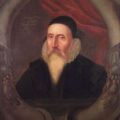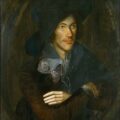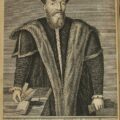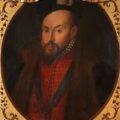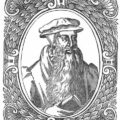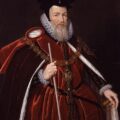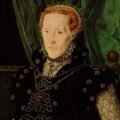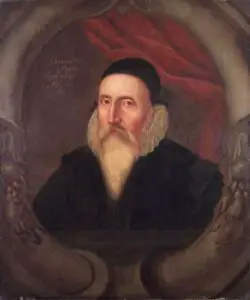
John Dee – A Biographical Sketch
by Robert Parry
Astrologer, mathematician, alchemist, antiquarian, spy, philosopher, geographer and adviser to virtually every prominent statesman, explorer and scientist of his day, the polymath John Dee (1527-1609) sits at the very heart of the Elizabethan intellectual establishment. His home once housed the most extensive library in England and his influence would have been acknowledged by almost every prominent individual of the period, from Queen Elizabeth herself to the Habsburg Emperor Rudolph II; from Walter Raleigh to Shakespeare. It is not possible to do justice to this remarkable and controversial man in a such a short biographical sketch as this, but let’s begin with some of the highlights from what was a long and extraordinary life:-
Born 1527. Father Rowland Dee – gentleman server (most likely supplier of textiles and liveries) at court of Henry VIII.
1542 – 1546 Education at St.John’s University Cambridge where he studies Greek, Latin, philosophy, mathematics, geometry and astronomy. Many important life-long associations built at this time including those of William Cecil, Roger Ascham, John Cheke etc.
1548 – 1550 Studies at Louvain, lectures on Euclid in Paris and studies geography with Gerardus Mercator, famous mathematician and map-maker.
1551 Returns to England with numerous navigational instruments and begins work under the patronage of the Earl of Pembroke; the Duke of Northumberland and the Grey family – which includes becoming tutor to Robert Dudley and King Edward VI.
1553 through to 1580’s Consultant to the Muscovy Company seeking trade with Russia via a possible North-East Passage through polar regions. Also employed as advisor and astrologer to the new Queen, Mary.
1555 Imprisoned by Mary for calculating and speculating on astrological charts without her approval. Almost executed for heresy and treason. Released some months later.
1556 – Petitions Queen Mary for a national library. When this is refused he establishes his own library at his home in Mortlake (west of London). This eventually becomes one of the most extensive in Europe.
1558 Asked to draw up an electional chart (horoscope) for determining the most propitious date for the coronation of Elizabeth I in 1559.
1562 – 1564 Foreign journeys – including Antwerp, Zurich, Rome and Hungary – many of which were secretive in nature and undertaken on behalf of William Cecil and the Queen.
1564 Publishes “The Hieroglyphic Monad”, a combined mathematical and magical treatise, dedicated to Habsburg Emperor Maximilian. Instructs Queen Elizabeth privately on its meaning and use.
1568 The 2nd edition of his ‘Propaedeumata Aphoristica’ a speculative work on maths and astronomy, presented to Queen Elizabeth.
1570 Publishes his influential introduction to the first English translation of Euclid’s ‘Elements’.
1575 Queen Elizabeth visits John Dee’s library at Mortlake (one of many visits over the years that are recorded).
1577 Publishes ‘General and Rare Memorials pertayning to the Perfect Arte of Navigation’, a work that sets out his special plans for an English maritime empire. He was consulted by explorers and seafarers extensively at this time – including his friends Humphrey Gilbert and Walter Raleigh – both instrumental in the continued discovery and colonisation of the ‘New World.’ This included a bid to locate a North-West Passage over the top of Canada to China.
1578 marriage to 3rd wife, Jane Fromond who had connections to Royal court. This is his most successful marriage (his earlier wives, sadly, died). He and Jane went on to have eight children.
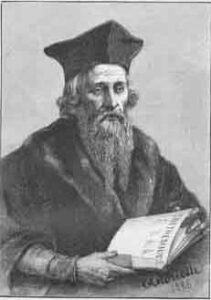
1581 onwards – Dee meets and begins work with the seer Edward Kelley. The so-called ‘angelic conversations’ begin – elaborate systems of communication with spiritual entities. They receive various mysterious tables of letters and numbers, redolent, some say, of ciphers in use by those engaged in espionage at the time – yet which have never been deciphered.
1583 – Dee, with his family and Kelley, journey across Europe to Cracow in the company of the Polish noble, Count Laski. The angelic conversations result in the transmission of an unique, sophisticated language (Enochian) with its own alphabet, syntax etc.
1584 onwards – Dee and Kelley travel to and eventually settle in Prague. Meet Habsburg Emperor Rudolph II. They remain here in the region under the patronage of the Rosenberg family where they continue angelic conversations and undertake extensive alchemical experiments.
1589 Returns with family to England.
1596 Becomes warden of Manchester College.
1605 his wife, Jane, dies, plus some of their children as a result of the plague. Dee returns to London after this. Also following the death of Queen Elizabeth in 1603 his fortunes tend to decline. The new King James is not sympathetic to the by-now elderly Dee.
1608/09 John Dee dies – though most likely not in such abject poverty as has been suggested. He was cared for by his daughter Katherine, and one of his surviving sons was by this stage also a successful and wealthy physician.
Summary
John Dee was not just a brilliant visionary, he was also a rational scientist – an observational astronomer; an early advocate of the Coperenican theory of the solar system, and also of calendar reform; he was consulted whenever a new comet or super nova appeared in the sky and he provided rational explanations for these based on the knowledge available at the time.
He was constantly experimenting with optics and mechanical devices and he might well have had a hand in the invention of the telescope many years before it appeared in the Netherlands around 1608. He was the first to coin the term ‘The British Empire’ and, having anticipated the Spanish Armada, he urged greater accuracy in mapping and strengthening the coastal defences around England.

Dee was a profoundly spiritual and religious man, but also a person who more than occasionally dabbled in the more murky areas of the occult. For this reason, his reputation has become somewhat tarnished over the centuries with many people ready to accuse him of naivety or wickedness, an unfortunate distortion of the facts that is only gradually being put to rights – as, for example, in the 2009 conference at Cambridge University, England, dedicated to a more sober re-appraisal of his life’s work. Unfortunately, there is no one notable invention or achievement that can be ascribed to him. There is no falling apple, no eureka moment. All we know is that he was in many respects a highly private man who undertook numerous secretive journeys overseas on behalf of the Privy Council, and that his home at Mortlake became for a time the very hub of English intellectual society. In addition to the steadfast friendships of Queen Elizabeth and her ministers William Cecil, Robert Dudley and Francis Walsingham, he enjoyed the support and admiration of three Habsburg Emperors – Charles, Maximillian and Rudolph – as well as the patronage of Prince Laski and King Stephen of Poland. He received a spectacular and extravagant offer of employment from Tsar Ivan in Russia and always there were requests from universities to fill prestigious academic posts – all of which he declined until much later in life when he accepted a humble position as Warden of Manchester University. It seems likely that he desired a re-unification of the Catholic and Reformed Churches, and that at least some of his more secretive work overseas might have been diplomatic in nature and focused towards those ends – though this is impossible to prove.
Contemplating John Dee as an individual raises some important questions for us in our ultra-rational and scientific twenty-first century. We are faced with the dilemma of a man who was highly educated, intelligent and well-connected, and yet who devoted a large proportion of his life to communicating with angels – some of which he professed to have seen personally. What are we to make of him? Was he simply a product of the fabulously irrational and imaginative age of the Elizabethans or was he in fact a very sophisticated and clever spy? Did he really experience the angelic messages which were recorded in hundreds of pages of manuscripts and which can still be read to this day or was he simply being deceived and manipulated by others? Without at least asking these questions we are turning our backs on a part of reality that we neglect at our peril, the world of the spirit, of mystical experience and faith – all those things that really sustain and nourish us from within. In Dee, all aspects of being a vulnerable human being are revealed, the whole spectrum from the rational to the metaphysical. He wanted to explore it all – and had the courage to do so. Because of this that he is surely worthy of a little of our attention.
Robert Parry is the author of Virgin and the Crab (an Elizabeth I novel), The Arrow Chest (an Anne Boleyn novel) and Wildish (18th Century) – see his Amazon author page.
